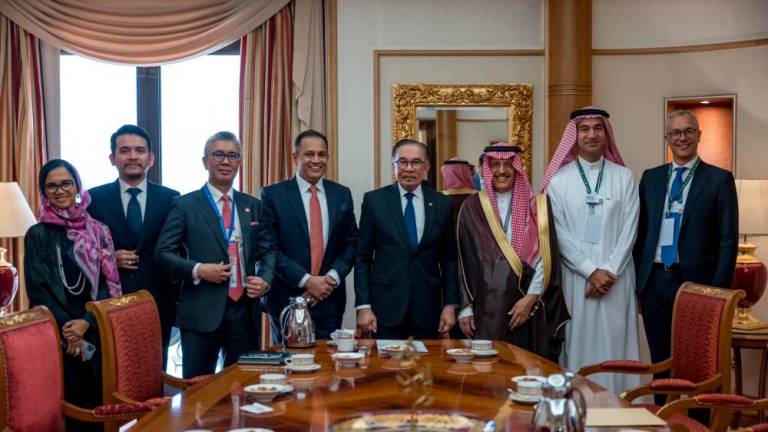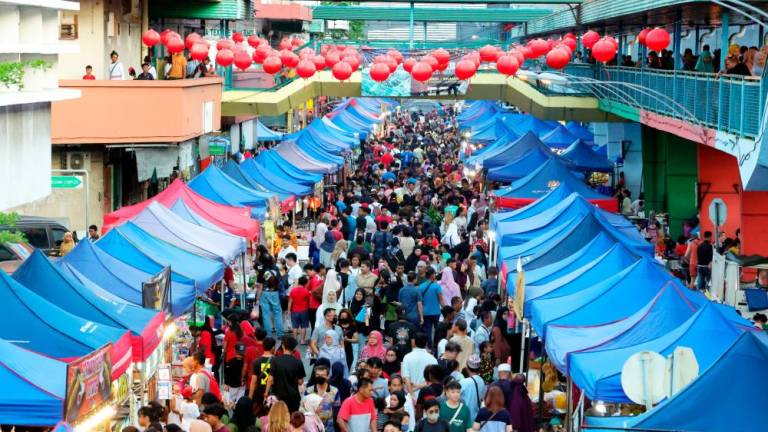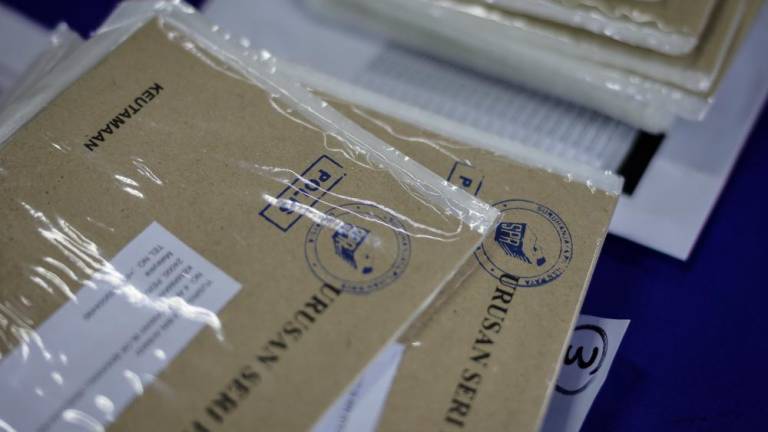DURING my stay in Sabah from 1979 to 1981, I noted two big factors, the first of which was the development through the energetic efforts of Datuk Harris Salleh, who was chief minister.
With his drive, he wanted much to be done, and with speed. He rallied the timber tycoons to plant cocoa, helped by the high prices of cocoa beans.
He planted fast-growing timber species such as Acacia, Gmelina and Albizia falcataria. It was exciting to see the plants later growing into soaring trees.
He identified rattan and had them grow with the Acacia trees. Most of these projects were not taken up by investors so he set up state bodies to lead the way. Later, he extended oil palm planting when the West African weevils were introduced in 1981 and pollination was no longer an issue.
He started a joint venture in a refinery in Sandakan. Palm oil lorries began to rule the dusty roads in place of timber lorries. I often travelled on these roads surfaced by gravel or tiny river stones that you had to look out for as they could fly off from the wheels of the heavy lorries and shatter your windscreen.
With no bridges, the wait for ferries at Segama and the mighty Kinabatangan could go well past midnight.
The second aspect that I saw was the demand for human resources. It was hard to find Sabah graduates to join plantations. Many planters were enticed to come from the Peninsula and some from Sarawak. Schools such as at Timbang Menggaris in Kota Belud were training students sought after as supervisors.
As for the workforce, many established plantations lost workers to new areas closest to towns such as Sandakan. Pamol in Sabah suffered heavily. It was dubbed by new plantations as their “training school”.
Many employees came from the Philippines and the Cocos settlements in Lahad Datu. However, they preferred to work in the mills and workshops.
Workers from Kedah and Perak came through the Labour Department’s Malaysia Migration Fund Board. However, most workers were recruited from Indonesia, notably from Sulawesi Selatan and Timor because they were excellent harvesters and weeders. Their aim was to work for a couple of years, save and go home to buy a plot of land, build a house and have some space to plant cocoa.
It, therefore, was a concern when they too started to abscond. We were far upriver and my staff had to think of ways to keep them back. Someone suggested we wait downriver at night in a big boat and catch those who were trying to row away, but I had to smile as it struck me that it was a practice not done any more in any part of the world, and that could make headlines in the Sabah Times.
A better suggestion came from our middle-aged office manager, V.T. John, who said we must engage the prettiest girls as typists and secretaries to work with him in his office. That would make the bachelors likely to stay, court, get married and settle for good. The formula worked, and some staff came upriver to plead for their jobs back. Inter-marriages were common.
It was worrying when the chairman, Leslie Davidson, came to visit from Unilever Plantations’ head office in London. He too could see the enormity of the labour shortage problem and was worried that the labour supply from Sulawesi and Timor may dry up as well. I suggested going there immediately to find out. He realised that I liked to travel and I took it that he agreed.
I left not many days later with senior supervisor Samsudin Pongo as a guide. He was a Bugis from Bone and he knew South Sulawesi well. It turned out he was a highly respected figure in his hometown in Watambone where the Bupati, the head of the regency, came for dinner.
We left early heading for Pinrang and up to the hills of Enrekang. The roads were rough and the bridges narrow, and I was told they were built by the Dutch. The long houses were built by the road, close together, and each had a kitchen at the far back. The villages were crowded, with children hurrying to school in the smartest red trousers, white shirts and ties.
We reached the hill town of Rantepao, the capital of Toraja, an enclave of people skilled with numbers, grew among the best coffee and reared the healthiest buffaloes and sacrificed them for dead relatives who were preserved in slots in the cliff faces.
We went downhill to Palopo, a port in the Bay of Bone, and noted for its riches in minerals such as nickel. We went south again to Sopeng, reputed to have the prettiest ladies, but Samsudin did not want me to tarry and instead we stayed the night at the port town of Pare Pare. We found a small hotel. The porter played chess and he beat me easily in two games.
The next day Samsudin and I flew to Timor. Kupang, the capital, was noisy and crowded, with the people mainly living off the sea. The land was parched, with a few lontar palms. I understood why the men had to leave their families to seek a living in Sabah.
We had to wait three days for the next plane. During that time, I met a person who played chess and beat me ruthlessly. Later he explained that he was an auditor, a Batak from North Sumatra. He said to the Batak chess was an obsession, played from young. I wish I knew before I sat down to face him.
I learned more about Indonesia. However, I realised I could never know nearly as much about Indonesians, for example, what they had in their mind. They were polite but could hide a grudge with a smile.
It was easier to handle their currency with many zeroes. The Bugis loved that because they could become rich in rupiah by working in Sabah. It was clear that more workers were likely to come.
I found the visit useful. I did not waste the chance to speak about Sulawesi when I met a Bugis worker, for I could see a bond, but I could not capitalise on that for long for news came from the company that I had to leave Sabah. I was to move to some far islands in the South Pacific.
The writer has extensive experience in the management of oil palm plantations. Comments: letters@thesundaily.com










